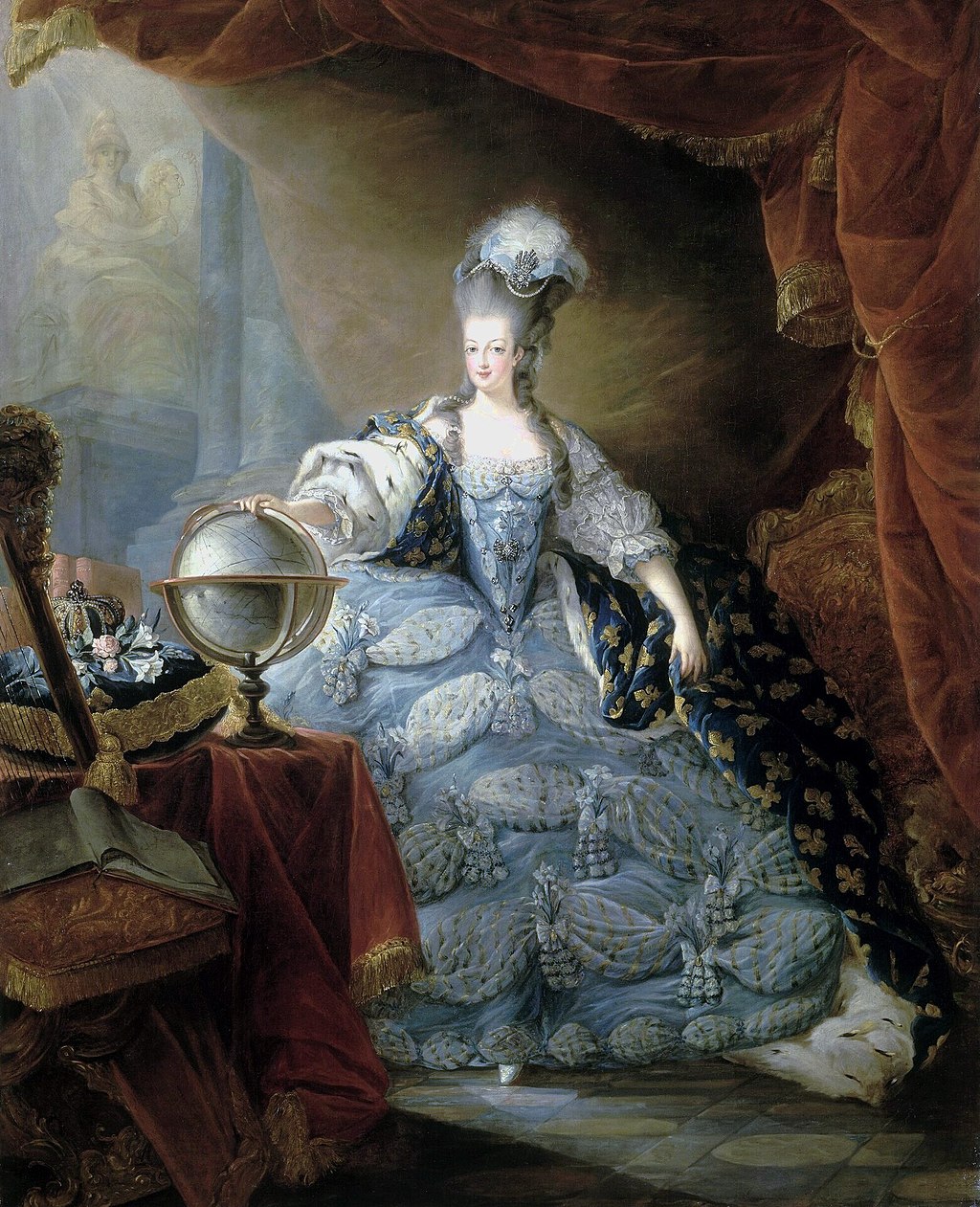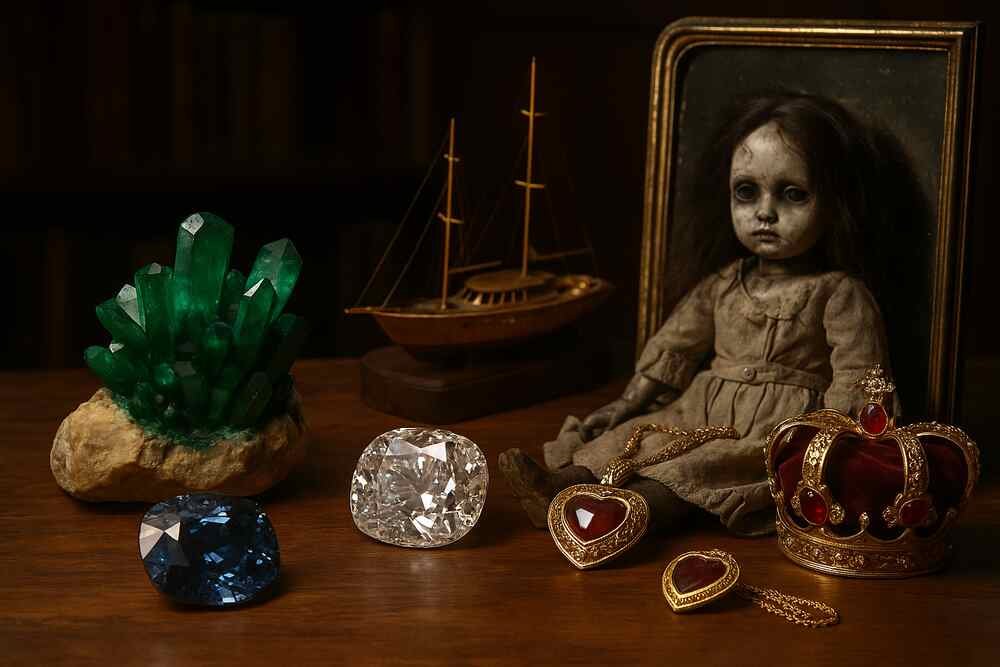Marie Antoinette Queen of France and Navarre 1755-1793
Her brother, Emperor Joseph II, describes her as “kind and honest”: Marie-Antoinette, Austrian princess and wife of Louis XVI, remains one of the most emblematic figures in the history of Versailles. She arrived at the French court when she was only fifteen years old. From her marriage to the Dauphin Louis, heir to the throne, she showed difficulties in adapting to French customs and, having become queen, she multiplied, most often unconsciously, the blunders which gradually alienated public opinion and contribute to tarnish its image in a disastrous way.
History often portrays her as frivolous and carefree, frequently escaping court life to seek solace in the Petit Trianon, an estate specially built for her by her husband, where she tended to her sheep. However, despite her personal preferences, Marie-Antoinette (1774-1792) was the Queen of France and had responsibilities to fulfill. Her expansive apartment was the hub of her public life. Privacy was scarce within these four rooms, including her bedroom adorned with a lavish bed adorned with gilded accents and peacock feathers. Even intimate events, like childbirth, occurred publicly to prevent any possibility of baby switching, showcasing the public nature of her life.
Marie Antoinette, the queen with a tragic fate.
Daughter of François I of Lorraine, emperor of the Holy Roman Empire, and of Marie-Thérèse of Habsburg, archduchess of Austria, Marie-Antoinette was born in Vienna on November 2, 1755. Her marriage to the future Louis XVI, celebrated in the Royal Chapel of the castle on May 16, 1770, is in part the work of the Duke of Choiseul, Secretary of State for Foreign Affairs and one of the main architects of Franco-Austrian reconciliation. This union, however, arouses some reluctance in public opinion, which retains the memory of the centuries-old struggles against the House of Austria. The sumptuous ceremonies that take place during princely weddings are notably marked by the inauguration of the hall of the Royal Opera.
Palace of Versailles | Trianon, Queen’s Hamlet and Visits (Chateau de Versailles)
The young Dauphine becomes the first woman of the court. With her husband, in the eyes of public opinion, she symbolizes the promises of a new reign that the age of Louis XV lets hope for. The aging King has indeed become very unpopular and his death, on May 10, 1774, is felt as a relief in the kingdom. Marie-Antoinette becomes queen when she is not yet twenty years old.

Marie-Antoinette painted by Jean-Baptiste André Gautier-Dagoty (1775). Jean-Baptiste André Gautier-Dagoty, Public domain, via Wikimedia Commons
Where was Navarre?
Navarre emerged as a kingdom around the early 9th century and existed as an independent realm until the 16th century.
Navarre was a historical kingdom that once existed between modern-day Spain and France. It occupied parts of northern Spain and southwestern France, with Pamplona serving as its historical capital. Over time, the region has been divided between these two modern countries.

Navarre / Navarra (yellow) in 1037. Crates, CC BY-SA 4.0, via Wikimedia Commons
A queen at court
In love with his wife, Louis XVI allowed her to take a place at court that the two previous queens, Marie-Thérèse of Austria and Marie Leszczinska, had never had. Appreciating the entertainment, the Queen intervened in the choice of court performances, encouraged the artists, and became enthusiastic about court balls.
As part of her duties, she frequently gathers her friends in her apartment and has a strong fondness for billiards and card games. However, she sometimes plays excessively, winning and losing substantial amounts of money. This worried the King, who banned some of the riskier games that were draining fortunes. Besides, Marie-Antoinette is musically inclined, playing the harp and harpsichord and showcasing her singing talents. She prefers certain composers like Grétry, Gluck, and Sacchini.
The Queen’s distinct taste supported several artists, like Élisabeth Vigée Le Brun, who painted many portraits of the queen. This greatly contributed to the painter’s success. The Queen was deeply interested in fashion, much to her mother’s disapproval. Despite having a lady responsible for her attire, she frequently picked her own dresses and hairstyles. She even met the milliner Rose Bertin, known sarcastically as the “minister of fashion,” bypassing her usual attendant.
Hall of Mirrors (Galerie des Glaces) | Symbol of the splendor at the Palace of Versailles
Marie-Antoinette in the privacy part
Upon her arrival at Versailles, Marie-Antoinette settled into the Queen’s apartment, obliged to fulfill the formalities of her role: morning routines, official meetings, public gatherings, and meals. However, accustomed to the simpler customs of Austrian palaces, she struggled with the strict etiquette of Versailles and sought a more private life.
She carefully selected her own circle of companions, not always with sound judgment. She preferred the comfort of her private chambers, located behind the formal state rooms, and endeavored to expand this private area upstairs and at the Petit Trianon, a gift from Louis XVI. Early on, she embarked on extensive renovation projects, altering much of the gardens, introducing charming structures, a theater, and eventually, an entire hamlet.
In 1778, after eight long years of marriage, she finally gave birth to her first child. Marie-Thérèse, known as “Madame Royale”, was soon followed by “Le Dauphin” King’s son, Louis-Joseph, born in 1781. A few years later, she gave birth to Louis-Charles who became Dauphin on the death of his elder brother in 1789 , then Sophie-Béatrice, who will only live a few months. The Queen will always be a loving mother and close to her children. The successive deaths of Sophie-Béatrice and of the first “Le Dauphin” King’s son, will be for her as for the King, particularly painful ordeals (like God’s judgement).
The criticized queen
Under the influence of her mother, Marie-Antoinette awkwardly tries to play a political role, but she is little appreciated by the Court. Madame Adélaïde, Louis XVI’s aunt, who does not tolerate the slightest fantasy – even the most innocent – in the Queen’s behavior, gives her the pejorative nickname of “Austrian” who will accompany her until her death. Despite an opinion that was initially very favorable to her, the Queen gradually became the target of pamphlets, libels and caricatures which redoubled from 1785 with the Collier affair, a fraud of which she was, however, only the victim. Its spending is scrutinized, often exaggerated, and it is accused of increasingly exhausting the finances of the kingdom. Every attempt to win back public opinion is a failure, and at the time of the Revolution the Queen is frankly hated.
Her ambiguous attitude during the French Revolution – she gave the image of a queen hesitating between flight and conciliation – accelerated her tragic end. Locked up in the Temple at the end of the day of August 10, 1792, she was transferred to the Conciergerie some time after the King’s execution in 1793. It was with great courage that she endured her trial before the Revolutionary Tribunal. , then its execution, on October 16, 1793, on the current Place de la Concorde. In 1815, his remains – along with those of Louis XVI – were solemnly transferred to the Abbey of Saint-Denis and placed in the crypt.
Sources: PinterPandai, Britannica, Palace of Versailles
Photo credit (main photo): Wikimedia Commons
Photo explanations: Marie Antoinette in two paintings by Elisabeth Vigée Le Brun. One (left) made in 1778, the other (right) made in 1779. In the second portrait you can see the new haircut adopted after the birth of the daughter: the birth had made the hairline much more delicate. hair, which therefore could no longer be elaborately styled and above all could not be subjected to strong stress; A new hairstyle was created by the hairdresser Léonard, especially for the queen.



